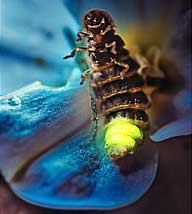Many animal species have saliva similar to that of humans. However, due to the differing lifestyles of these species, their saliva has various unique and remarkable effects.
The saliva of spiders is a type of “necrotic agent.” When a spider catches its prey in a web, it quickly climbs onto it; the first thing it does is use its nearest leg to stab into the prey’s body, immediately injecting saliva into it.
 |
| The saliva of fireflies is a highly effective “paralytic agent” (Image: zin.ru) |
Once the spider’s saliva is injected into the insect’s body, it causes the insect to gradually become soft and eventually turn into a liquid. At this point, the spider can enjoy its meal.
Conversely, the saliva of swifts is a type of “adhesive” that helps them build nests. The golden-crowned warbler often nests in caves within rock mountains and on steep cliffs. When building their nests, the saliva secreted comes into contact with the air and quickly hardens, ultimately forming a nest shaped like a half-cup. This is the famous swift nest that is often mentioned.
The saliva of cats is considered a type of “antiseptic agent.” It contains a substance known as “bacterial-cleansing catalyst” that serves to clean wounds, eliminate germs, prevent infections and pus, and ultimately speed up the healing process. Therefore, when a cat injures its paw, it may lick the wound to facilitate self-healing.
The saliva of fireflies is indeed a highly effective “paralytic agent.” When fireflies capture their prey, they use their hard mandibles to continuously inject toxic saliva into the prey. This action causes the prey to lose all sensation…


















































